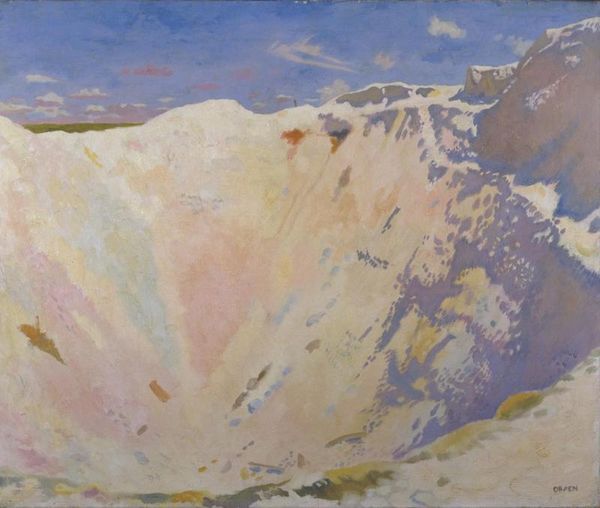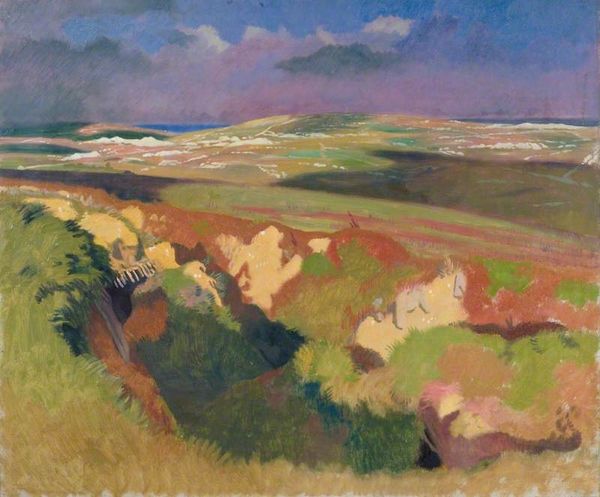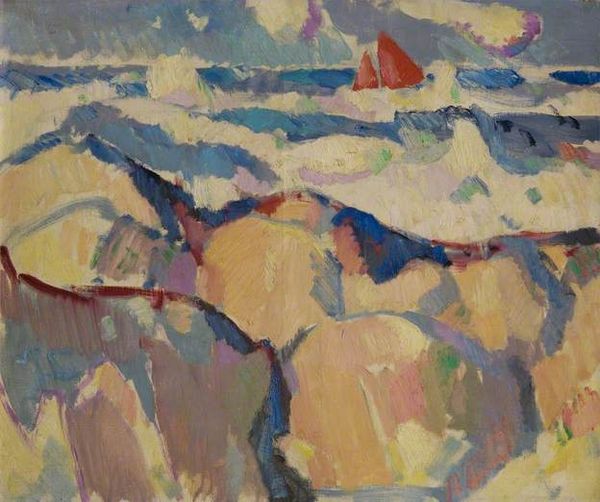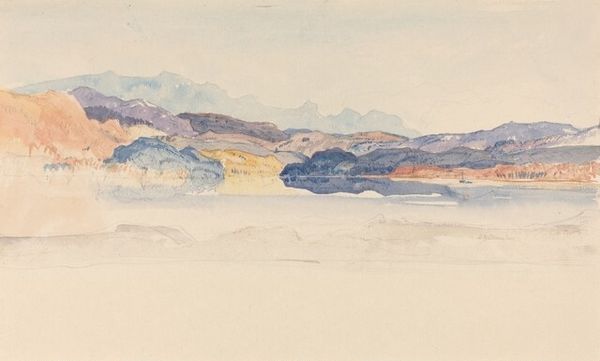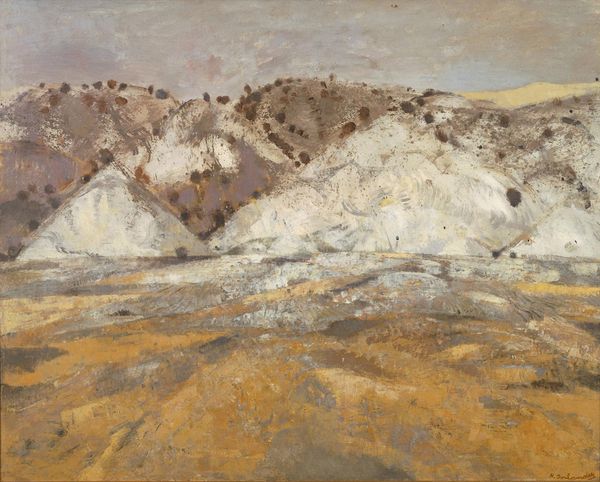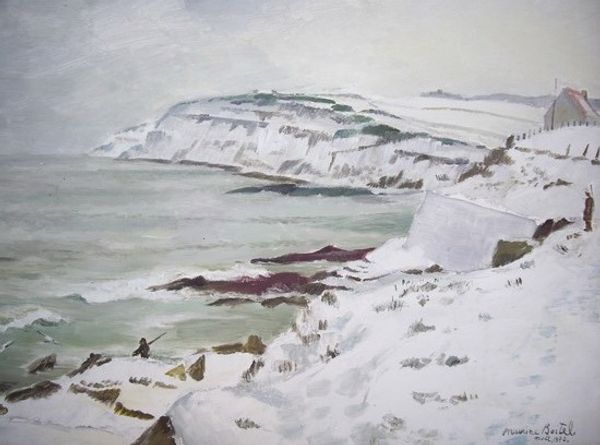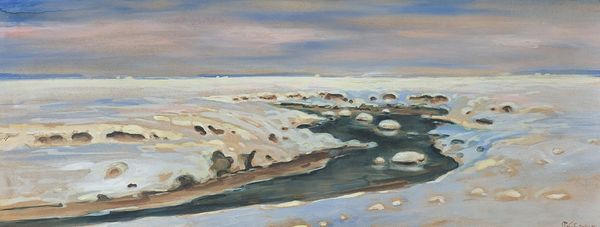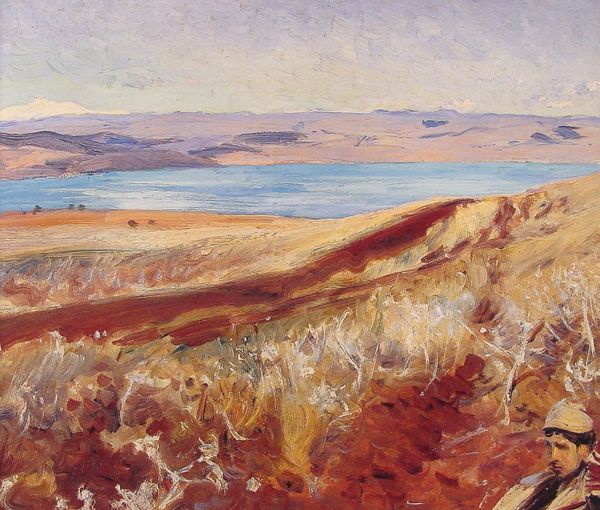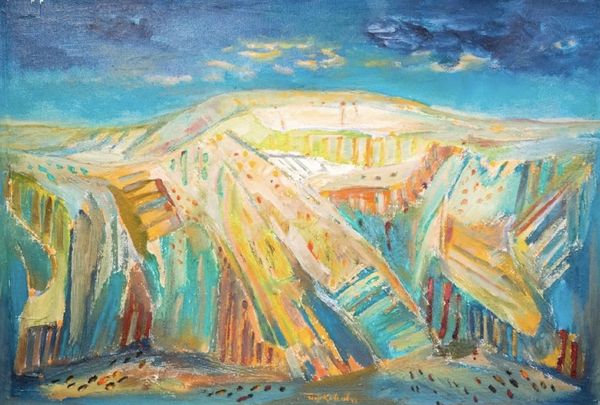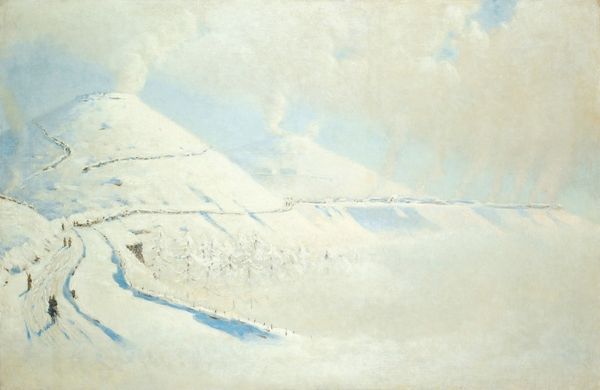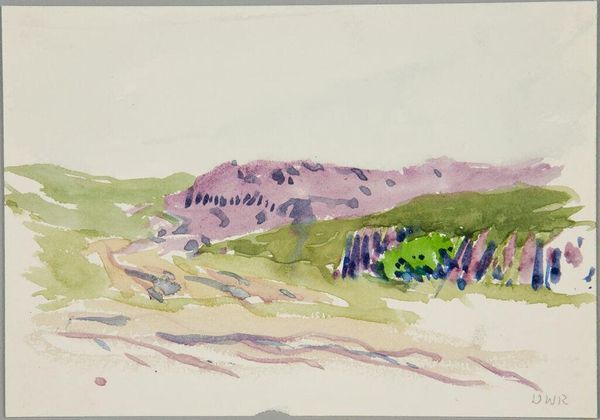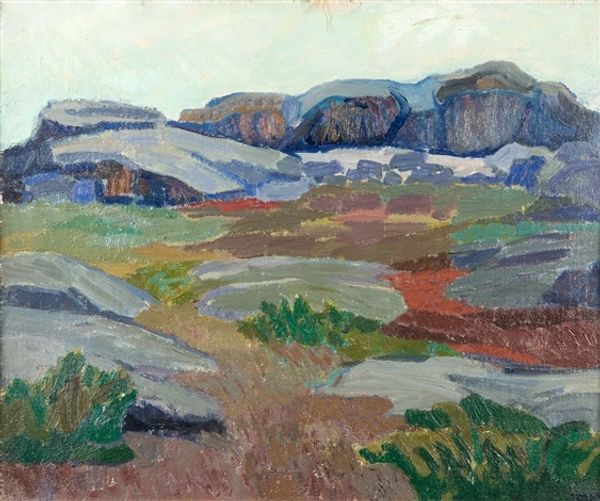
Copyright: Public domain
Editor: "The Big Crater," painted in 1917 by William Orpen, rendered with oil paint... The canvas is dominated by a stark, almost lunar landscape. What strikes me most is this odd combination of beauty and devastation, an unsettling marriage of color and destruction. What do you make of it? Curator: Ah, yes, Orpen. It's like stumbling upon an alien planet, isn’t it? He paints what feels like another world—and in a way, it *was*. Imagine being an official war artist in World War I, surrounded by relentless carnage. What does one even *do* with that? He chose, it seems, not to give us the trenches directly but the aftermath, a world reshaped by unimaginable force. Do you feel the ghostly absence? Editor: Absolutely. It’s desolate. A quiet…horror. There’s that beautiful light hitting the top of the ridges. It's so surreal. It’s almost Romantic. Curator: Romantic, yes, in the original sense. Think of Caspar David Friedrich's lonely wanderers dwarfed by nature, except here, nature is war itself, creating these "big craters" --almost wounds on the earth. There’s a terrible irony, painting something so sublime when its origins are so deeply ugly. Do you find yourself strangely drawn to it despite that? Editor: Definitely. Maybe because the beauty softens the blow a bit, inviting contemplation rather than just shock. I'd never really thought of war having its own landscape before. Curator: War has always shaped landscape, visibly and invisibly. This, I think, is Orpen showing us just how profound and disturbing that shaping can be. A beautiful elegy perhaps, carved from the face of destruction. Editor: So, in a way, it's not just about depicting destruction, but how we make sense of it. Food for thought.
Comments
No comments
Be the first to comment and join the conversation on the ultimate creative platform.

